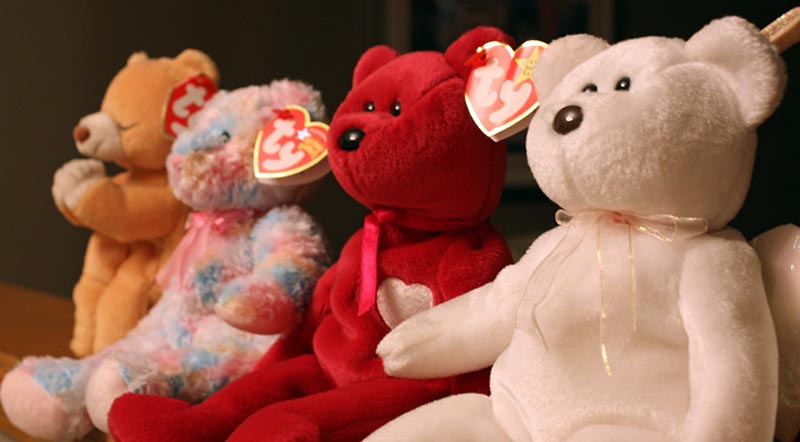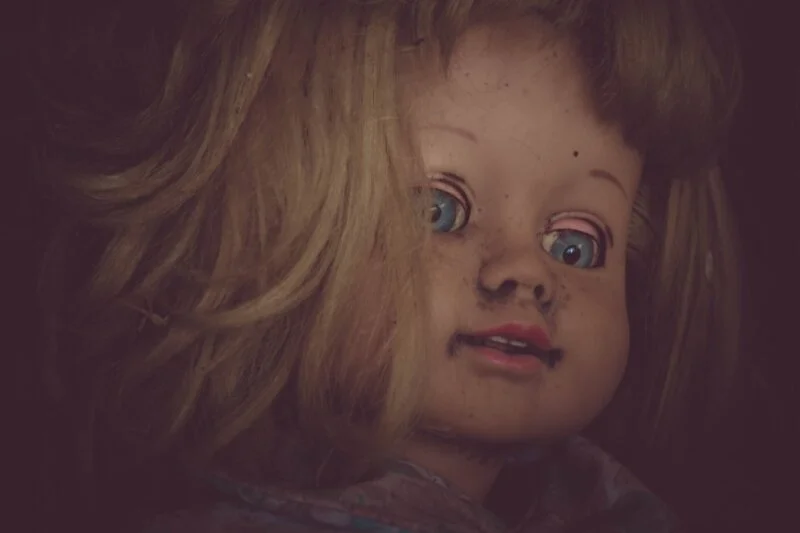Grown Men Love Buying & Selling Beanie Babies
Peddling the plush toys can still be lucrative — and dudes are reaping the benefits.
By Jessie Schiewe
Flickr/Dominique Godbout
Mark is a 29-year-old designer at a tech company in California’s Silicon Valley with a side hustle selling Beanie Babies. For almost a decade he’s been doing it, making as much as $8,500 on just one of the toys. He bought a car with his Beanie Baby earnings and paid off half the mortgage on a new house using those funds.
Despite these successes, Mark — whose real name is not being used to preserve his anonymity — rarely talks about his Beanie Babies side hustle. Though his wife knows about it, his embarrassment about collecting children’s toys generally prevents him from telling others.
“It’s kind of, I don’t want to say shameful, but it’s not something I go around bragging to my friends and family about,” he told OK Whatever. “It’s a little bit weird.”
But perhaps even weirder is the fact that Mark is not a rarity in the Beanie Baby buying-and-selling scene. In fact, by his estimates, he’s part of the majority.
“The main demographic of collectors right now is, believe it or not, men that are between the ages of 25 to 35,” he explained.
Mark estimates they account for about 75-percent of all Beanie Baby sellers and buyers. Older women are also in there, but he says they are usually “lower-key collectors” who deal with Beanie Babies in the “$50-$200” range. Per Mark’s observations, the female collectors seem more keen on creating Beanie Baby guidebooks, websites, and appraisal businesses than in making bank off the toys.
“The young guys are the ones with the multi-thousand or even multi-hundred-thousand dollar collections,” he said. “The guys also seem to turn it into a lucrative endeavor, where the women in the community tend to collect and keep them.”
Mark arrived at these conclusions based on the experiences he’s culled over the 10 years he’s spent texting, emailing, meeting up with, and video chatting with others in the Beanie Babies selling community.
Introduced in the early-’90s, Beanie Babies continued to reach new heights of fame well into the 2000s. Do the math and that’s around the same time Beanie Baby collectors between the ages of 25 to 30 were coming of age. Most, including Mark, grew up with the toys, getting them as gifts or finding mini versions of them in their McDonald’s Happy Meal boxes.
Mark, whose first Beanie Baby was Bones the Dog, used to “bring them to school to show other kids.” Though he also collected Pokemon cards and pogs, Beanie Babies quickly eclipsed them.
His early passion for Beanie Babies led him to revisit them when he was in college and his parents asked him to clean out his childhood bedroom. He thinks the same nostalgia factor has influenced other sellers in his age group, as well.
“Those men probably collected as kids, like me,” he said. “And because they now have the money to buy and sell and make more money out of it, they keep doing it. A lot of us re-sell, so it’s definitely collectors re-selling to collectors.”
Selling Beanie Babies is still profitable — if you know which ones to look for — but Mark knows that the bubble will eventually burst, if it hasn’t already. Except for “that 1 percent” of Beanie Babies — like prototypes, first generations, Employee, or limited release bears — their worth has been steadily declining since the turn-of-the-century, and show no signs of increasing.
“They’re just not as valuable, which happens when there are more people trying to sell them than there are trying to buy them,” Mark said.
Because of this, he has no plans of quitting his job any time soon or of retiring early and just selling Beanie Babies. Though selling them makes for a great secondary channel of cash, they’re not valuable enough peddle full-time.
“Over the years, they’ve been a really great source of income, but Beanie Babies, I think, will always be a side thing for me.”







How to profit from childhood memories.